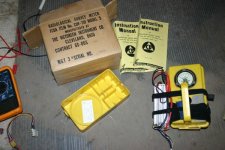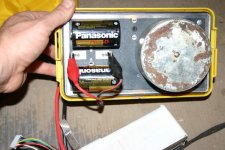I enjoyed being teacher's assistant to my highschool chemistry teacher.  Aside from the fun of learning stuff, from time to time she also had various expired chemicals that had to be "disposed of", such as a jar of manganese powder and some magnesium "tape". (pretty sure I still have some of both around here someplace). some of these things we used in "demonstrations" of how NOT to handle chemicals or perform experiments.
Aside from the fun of learning stuff, from time to time she also had various expired chemicals that had to be "disposed of", such as a jar of manganese powder and some magnesium "tape". (pretty sure I still have some of both around here someplace). some of these things we used in "demonstrations" of how NOT to handle chemicals or perform experiments.
Nowadays I'm sure the schools and parents would be horrified at such things, deeming them all incredibly unsafe. I doubt they get to do more dramatic experiments than turning litmus paper different colors anymore.
Nowadays I'm sure the schools and parents would be horrified at such things, deeming them all incredibly unsafe. I doubt they get to do more dramatic experiments than turning litmus paper different colors anymore.



